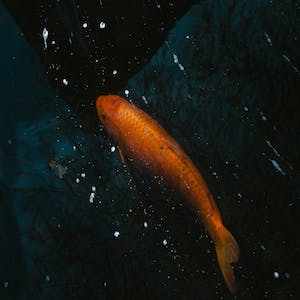Carassius auratus as a bioindicator of the health status of Lake Trasimeno and risk assessment for consumers

Accepted: 20 March 2023
HTML: 3
All claims expressed in this article are solely those of the authors and do not necessarily represent those of their affiliated organizations, or those of the publisher, the editors and the reviewers. Any product that may be evaluated in this article or claim that may be made by its manufacturer is not guaranteed or endorsed by the publisher.
Authors
Fish are good bio-indicators of the health status of the aquatic environment and can be used as biomarkers to assess the aquatic behavior of environmental pollutants, the exposure of aquatic organisms, and the health risk for consumers. Goldfish are a significant bioindicator in the Lake Trasimeno aquatic system (Umbria, Italy). This study aimed to characterize the health status and the chemical and biotic contamination of Lake Trasimeno to define its anthropogenic and natural pressures and the risk associated with consuming its fishery products. 114 determinations were performed on Carassius auratus samples from 2018 to 2020, and the occurrence of brominated flame retardants, non-dioxin-like polychlorinated biphenyls, heavy metals, and microplastics was analytically investigated. Dietary exposure assessment, risk characterization, and benefit-risk evaluation were performed for schoolchildren from 3 to 10 years old. Flame-retardants registered high levels of non-detects (99% for polybrominated diphenyl ether and 76% for hexabromocyclododecanes), while polychlorinated biphenyls were found in all samples with a maximum level of 56.3 ng/g. Traces of at least one heavy metal were found in all samples, though always below the regulatory limit. Microplastics were found with a 75% frequency of fish ingesting at least one particle. Dietary exposure and risk characterization reveal negligible contributions to the reference values of all contaminants, except for mercury, which reached up to 25% of admissible daily intake. The benefit-risk assessment highlighted that the benefits of freshwater fish intake outweigh the associated risks. The examination of goldfish as indicator fish reveals the quality of Lake Trasimeno's aquatic environment and the safety of its products.
How to Cite

This work is licensed under a Creative Commons Attribution-NonCommercial 4.0 International License.
PAGEPress has chosen to apply the Creative Commons Attribution NonCommercial 4.0 International License (CC BY-NC 4.0) to all manuscripts to be published.

 https://doi.org/10.4081/ijfs.2023.11137
https://doi.org/10.4081/ijfs.2023.11137



